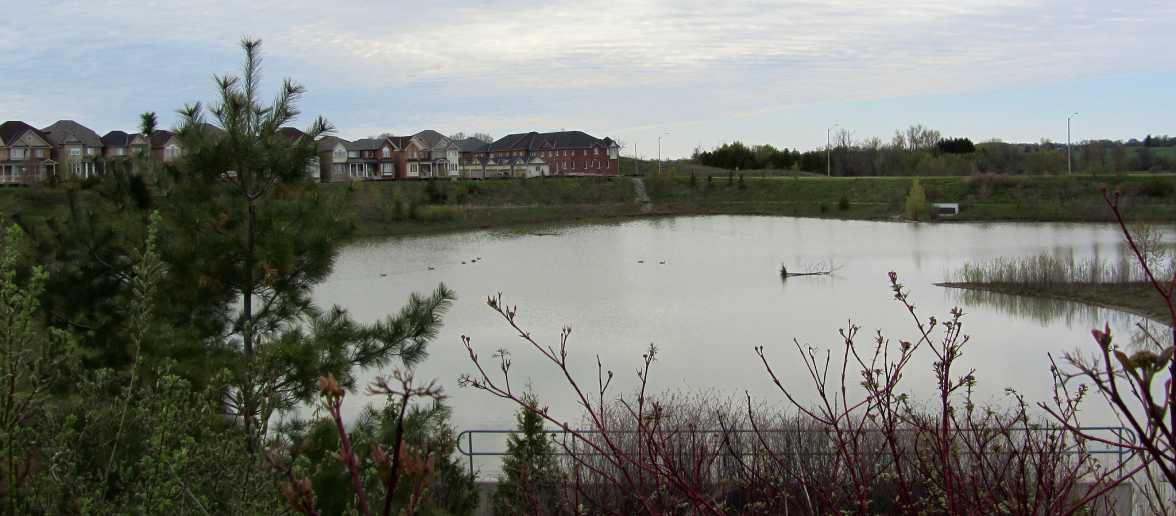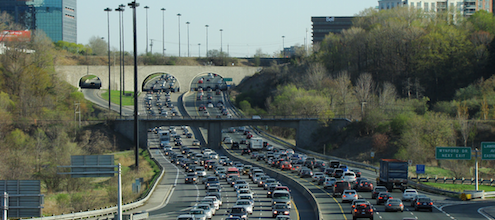
How to Stop Turning Valuable Clean Water into Costly Stormwater
Canada’s infrastructure deficit continues to make headlines in the country. The requirement to maintain and build new infrastructure offers an opportunity to think about the interplay between the environmental impacts of our infrastructure, the means by which we pay for these infrastructure and their environmental costs (sounds pretty ecofiscal to me!). This weeks’ blog looks at stormwater infrastructure.
Dumping Freshwater down the Drain
Our cities are characterized by a large share of impermeable surfaces, such as paved roads, parking, sidewalks and rooftops. These surfaces and other built structures prevent precipitation from penetrating into the soil. The accumulation by rain or melting snow of oil, dirt and debris by freely flowing on these impermeable surfaces, changing initially valuable freshwater into polluting stormwater. In some cities, this polluting cocktail is then channelled through our storm drain system directly into various watersheds in the country. A non-exhaustive list of the related environmental harms are: threats to human health, fish and wildlife, polluted freshwater and beaches.
The changing climate is likely to increase the intensity of rainfalls and the speed of snow melting, exacerbating environmental costs related to stormwater and related cost pressures on infrastructure.
Stormwater Fees Offer a Solution
The combined problem of costly urban stormwater runoffs and decaying stormwater systems presents an ecofiscal opportunity: stormwater fees. Municipality responsible for stormwater infrastructure can impose a charge according to a measure of a property’s share or total area of impermeable surfaces. Differentiating this fee by the amount of impermeable surface can encourage home and building owners to reduce the stormwater runoff from their properties.
An incentive is usually provided by crediting the rate to property owners who incorporate best management practices for stormwater detention/retention. Best management practices include a wealth of measures known as “green infrastructure” (as opposed to gray infrastructure) such as green roofs, rain barrels and permeable surfaces (such as permeable concrete or vegetated areas). According to the US EPA, these green infrastructures (or as they call it “low impact development”) can generate capital cost-savings of up to 80% of the cost of conventional stormwater draining systems.
While stormwater fees may sound like an added financial burden for citizens and businesses, the reality is that for most municipalities, it is not. Currently, property taxes are the main revenue source for municipalities to fund stormwater management. Shifting the costs of stormwater management explicitly to those who use the service the most is a way not only to provide an environmental incentive but to have a fair and dedicated funding system associated with the increased cost pressures of this service.
Financing municipal stormwater systems through property tax runs the risk that property owners with good stormwater management practises will pay for the costs imposed by other property owners with huge water runoffs. Furthermore, providing an explicit incentive for green infrastructure implementation through stormwater fees has the potential to reduce the (financial) stress on existing municipal draining systems.
North American Municipalities are Moving
Municipalities in North America have not turned a deaf ear to the potential environmental and budget benefits from stormwater fee implementation. Due to explicit stormwater legislation in the US, hundreds of municipalities have turned to stormwater fees. In Canada, only a dozen municipalities—most in Ontario—have implemented such a user fee.
As a recent example, in 2011 Kitchener implemented a stormwater user fee. Residential owners are charged on a tiered flat fee system based on the size of dwelling unit. It is on average $10 a month per single dwelling house. Non-residential buildings are charged based on the amount of impermeable surface. Residential and non-residential owners can obtain a credit of up to 45% of the rate for the implementation of green infrastructure.
In 2016, Mississauga will have a similar tiered based system. However, the credit programs is said to only be available to non-residential owners. City staff said that extending the credit program to home owners would be too expensive.
But Does it Work?
While there is anecdotal evidence of the increased implementation of green infrastructure in American municipalities from the use of stormwater fees, there does not seem to be formal assessment of the environmental or economic effects of this policy. A lack of proper data may explain the lack of evidence on the best stormwater management policies.
In the meantime, some things are sure: (1) existing stormwater infrastructure needs to be maintained and replaced and (2) the (environmental and financial) cost of existing stormwater runoff will increase, with added pressures from increasing precipitation (due to climate change) and increasing urbanization. Stormwater fees offer a fair and direct way of funding municipal stormwater management. They have the ability to provide incentives to implement cost-saving green infrastructure. Such policy is part of a larger municipal ecofiscal toolkit, which has the potential to help municipalities fight other aspects of infrastructure deficits. Stay tuned for more ecofiscal policies, including those about water!




Comments are closed.